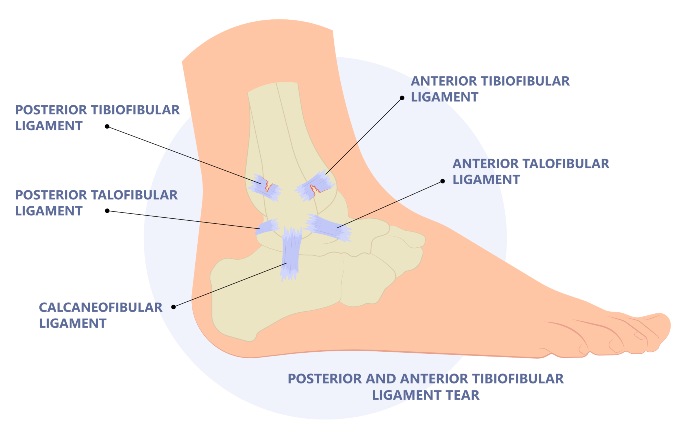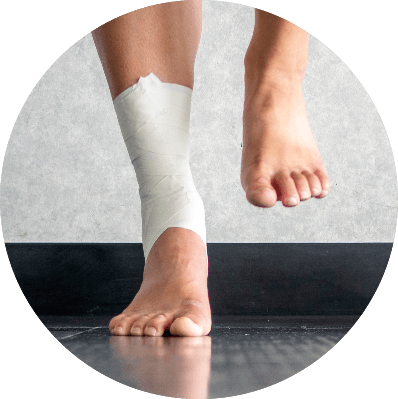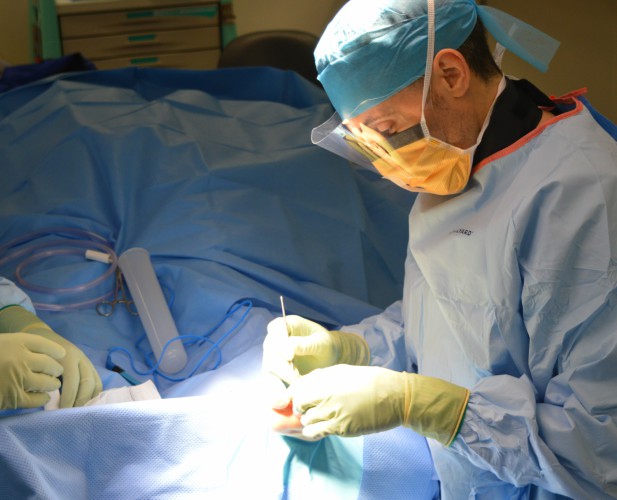ANKLE LIGAMENT RECONSTRUCTION MELBOURNE
ANKLE LIGAMENT RECONSTRUCTION
What is ankle ligament reconstruction surgery?
Ankle ligament instability may result from a single severe injury or repeated minor sprains of the ankle. The goal of ankle ligament reconstruction surgery is to tighten and firm up one or more of the ankle ligaments.
The surgery involves tightening up the ligaments by peeling the ligament off bone and reattaching it. The ligament is then placed in a tightened position by using stitches and anchors through the bone itself.
An artificial ligament may be added to strengthen the repair and allow early movement. It may be necessary to explore nearby tendons and repair any tears at the same time. Mr Keith will discuss the surgical approach with you before surgery.
ANKLE ANATOMY
What are the most commonly injured ligaments in your ankle?
Ankle ligaments are strong, movable tissues that connect the foot bones with the lower leg bones. These ligaments help stabilise the ankle joint and prevent it from twisting or rolling.
The major ankle lateral ligaments (the most commonly injured) are:
(1) Anterior talofibular ligament (ATFL) and/or
(2) Calcaneofibular ligament (CFL)
(3) Posterior talofibular ligament (PFL)
It is usually the front and sometimes middle bands that are injured when you sprain your ankle
(See Figure 1 below).

Figure 1.
ANKLE INSTABILITY ASSESSMENT
Assessing your ankle injury
Diagnosing your ankle injury may include:
- A physical exam – It is important to identify whether an ankle fracture, sprain, or another condition is present.
- X-ray – An X-ray of the ankle is may help determine a fracture, arthritis, or other problems.
- Stress X-ray – Pressure is applied to the injured ankle during an X-ray film. This may uncover ankle problems unseen on regular X-rays.
- CT scan – Uses computers and rotating X-ray machines to create cross-sectional images of the ankle
- MRI scan – An MRI scan is a computer generated high-resolution image of the ankle.
DO YOU NEED ANKLE SURGERY?
Mr Keith will usually exhaust all treatment options before advising for surgical intervention.
Ankle ligament surgery is usually a final option after non-operative treatments are exhausted.
The type of operation depends on:
- Goals of the patient.
- Patient specific circumstances of the injury/deformity.
Mr Kieth will discuss the options available to your specific situation.
POTENTIAL COMPLICATIONS
The ankle surgery complications which may occur after an operation may include:
- Ankle pain
- Ankle swelling
- Ankle stiffness and restricted movement
- Infection
- Numbness or tingling down the side of your foot
- In 5% – 10% of cases the surgery may not work.
Mr Keith will discuss with you in detail the potential complications and risks in relation to your ankle surgery.
ANKLE LIGAMENT RECONSTRUCTION SURGERY MELBOURNE
Helpful information and frequently asked questions (FAQ’s)
Ankle Ligament Reconstruction Surgery Melbourne
Mr Keith consults with patients from all over Melbourne in relation to ankle ligament surgery. Mr Keith consults at the following practice locations in Melbourne including Armadale, Malvern, Richmond, Heidelberg and in Shepparton, country Victoria.




